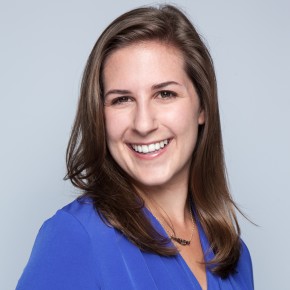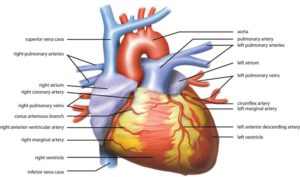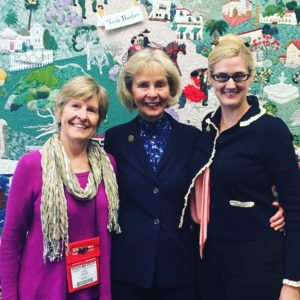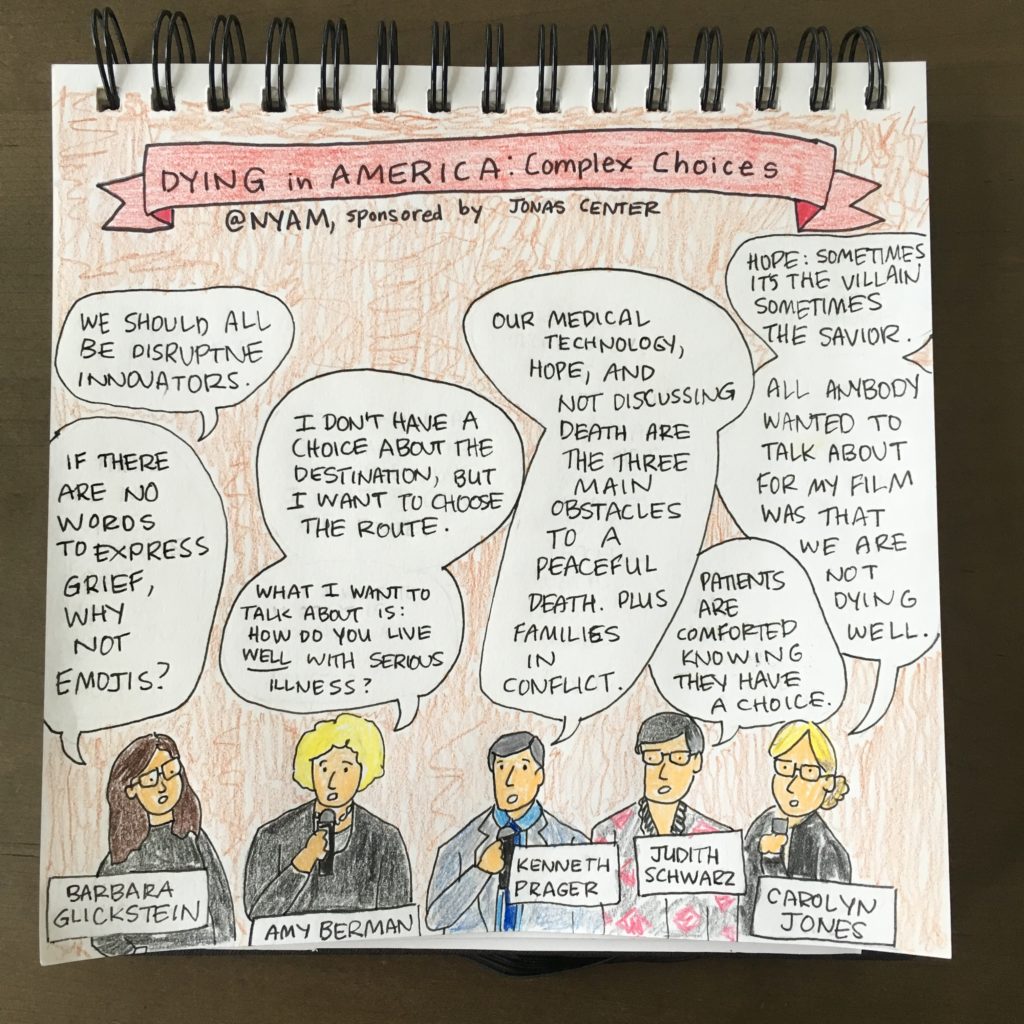 This is the third of a 3 part look at the Heart Team by CHMP Media Fellow Yael Maxwell looking at the Heart Team in practice: what works, what doesn’t, and what the future may hold. This story originally appeared on TCTMD.com. Read part 1 here and part 2 here.
This is the third of a 3 part look at the Heart Team by CHMP Media Fellow Yael Maxwell looking at the Heart Team in practice: what works, what doesn’t, and what the future may hold. This story originally appeared on TCTMD.com. Read part 1 here and part 2 here.
On the first Tuesday in March, several people sat facing each other in an eighth-floor conference room in one of Michigan’s highest volume cardiac centers. The sun had barely risen, its first rays inching through the east-facing window as if to help illuminate the discussion that had begun some 20 minutes earlier.
Of those present—advanced heart failure physicians, interventional cardiologists, noninvasive cardiologists, surgeons, an anesthesiologist, a physician assistant, a coordinator, and a nurse manager—about half were clad in scrubs, having already rounded on patients or prepped the cath lab for the day’s cases.
Each knew the weekly routine. They flipped through the binder in front of them and glanced at the echocardiograms and cardiac MRIs playing on a screen at the front of the room as Richard McNamara, MD, presented the third case of the morning.
A 68-year-old outpatient had been complaining of weakness and shortness of breath since eating a jalapeno dish on Super Bowl Sunday. It was originally thought he was having a heart attack. But after testing revealed a blood clot in the left descending coronary artery, the course of treatment became less clear.
Within 10 minutes, the group had decided on a course of action, and by 8:30 that morning, McNamara had communicated the plan to the patient.

creative commons lic.
Let’s Give It a Try
While the Heart Team concept evolved to bridge the often steel-walled siloes within the specialty, cardiologists, surgeons, and non-physician staff openly admit its use in practice is inconsistent and needs improvement. Some hospitals, however, have been creative in making it work for their practitioners and their patients.
For the team at Spectrum Health (Grand Rapids, MI), the management of their cardiac patients was not always so streamlined. Before the fall of 2014, “our process was very chaotic,” said McNamara, an interventional cardiologist who serves as co-director of Spectrum Health’s Heart Team.
“What tended to happen before is you’d have part of the conversation,” McNamara explained. “You’d say ‘What’s plan B?’ And we’d never have plan B very well worked out.”
Spectrum Health cardiothoracic surgeon and Heart Team co-director, Theodore J. Boeve, MD, said that cardiologists and surgeons “had more head butting before we had the Heart Team than we do now.”
McNamara originally spearheaded the effort to start Heart Team meetings at Spectrum out of pure frustration. That the 2014 American Heart Association/American College of Cardiology guidelines lists the Heart Team as a “should do” process for trans catheter aortic valve replacement (TAVR), helped to “put a little bit of structure and muscle behind it,” he said, but “we have always been absolutely dedicated to [excellent outcomes]. Once we had identified this as a problem . . . we said, ‘This looks like a potential solution. Let’s give it a try.’”
At first, meetings were held monthly. Practitioners submitted their cases to McNamara for presentation. Someone recorded minutes. But many of the cardiologists and surgeons who were most wanted didn’t show up, explained David Wohns, MD, director of Spectrum Health’s catheterization, or cath lab.
“We had a lot of skepticism about its value,” said Wohns, Finding a time that worked for everyone was the hardest logistical issue, since surgeons start doing rounds on patients earlier than the cardiologists do. They eventually settled on 6:45 am.
 This is the third of a 3 part look at the Heart Team by CHMP Media Fellow Yael Maxwell looking at the Heart Team in practice: what works, what doesn’t, and what the future may hold. This story originally appeared on TCTMD.com. Read part 1 here and part 2 here.
This is the third of a 3 part look at the Heart Team by CHMP Media Fellow Yael Maxwell looking at the Heart Team in practice: what works, what doesn’t, and what the future may hold. This story originally appeared on TCTMD.com. Read part 1 here and part 2 here.
On the first Tuesday in March, several people sat facing each other in an eighth-floor conference room in one of Michigan’s highest volume cardiac centers. The sun had barely risen, its first rays inching through the east-facing window as if to help illuminate the discussion that had begun some 20 minutes earlier.
Of those present—advanced heart failure physicians, interventional cardiologists, noninvasive cardiologists, surgeons, an anesthesiologist, a physician assistant, a coordinator, and a nurse manager—about half were clad in scrubs, having already rounded on patients or prepped the cath lab for the day’s cases.
Each knew the weekly routine. They flipped through the binder in front of them and glanced at the echocardiograms and cardiac MRIs playing on a screen at the front of the room as Richard McNamara, MD, presented the third case of the morning.
A 68-year-old outpatient had been complaining of weakness and shortness of breath since eating a jalapeno dish on Super Bowl Sunday. It was originally thought he was having a heart attack. But after testing revealed a blood clot in the left descending coronary artery, the course of treatment became less clear.
Within 10 minutes, the group had decided on a course of action, and by 8:30 that morning, McNamara had communicated the plan to the patient.

creative commons lic.
Let’s Give It a Try
While the Heart Team concept evolved to bridge the often steel-walled siloes within the specialty, cardiologists, surgeons, and non-physician staff openly admit its use in practice is inconsistent and needs improvement. Some hospitals, however, have been creative in making it work for their practitioners and their patients.
For the team at Spectrum Health (Grand Rapids, MI), the management of their cardiac patients was not always so streamlined. Before the fall of 2014, “our process was very chaotic,” said McNamara, an interventional cardiologist who serves as co-director of Spectrum Health’s Heart Team.
“What tended to happen before is you’d have part of the conversation,” McNamara explained. “You’d say ‘What’s plan B?’ And we’d never have plan B very well worked out.”
Spectrum Health cardiothoracic surgeon and Heart Team co-director, Theodore J. Boeve, MD, said that cardiologists and surgeons “had more head butting before we had the Heart Team than we do now.”
McNamara originally spearheaded the effort to start Heart Team meetings at Spectrum out of pure frustration. That the 2014 American Heart Association/American College of Cardiology guidelines lists the Heart Team as a “should do” process for trans catheter aortic valve replacement (TAVR), helped to “put a little bit of structure and muscle behind it,” he said, but “we have always been absolutely dedicated to [excellent outcomes]. Once we had identified this as a problem . . . we said, ‘This looks like a potential solution. Let’s give it a try.’”
At first, meetings were held monthly. Practitioners submitted their cases to McNamara for presentation. Someone recorded minutes. But many of the cardiologists and surgeons who were most wanted didn’t show up, explained David Wohns, MD, director of Spectrum Health’s catheterization, or cath lab.
“We had a lot of skepticism about its value,” said Wohns, Finding a time that worked for everyone was the hardest logistical issue, since surgeons start doing rounds on patients earlier than the cardiologists do. They eventually settled on 6:45 am.
 “Healthcare is changing for the future, who’s going to be there?” Congresswoman Lois Capps, 2016, Washington DC.
“Healthcare is changing for the future, who’s going to be there?” Congresswoman Lois Capps, 2016, Washington DC.





